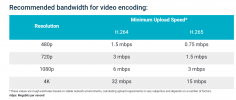I produce mostly web marketing videos shooting in 4K with a P4P and Air 2S in H.264. I then most often edit and produce the final cut using H.264 reduced to 1920x1080, and only sometimes producing at full 4K. I'm considering doing some trials with the H.265 codec to try to save storage space as it's alleged to do. A few answers to questions from those of you with experience would be helpful please:
1. If I intend to edit and produce in H.265, is it necessary to also shoot in H.265? My experiments rending footage in H.265 from footage shot in H.264 did not result in a significant file size reduction vs. rendering in H.264. Are they cross-compatible - do you have to render using the same codec you shoot with?
2. What have some of you found to be pros and cons between the two codecs in your uses while shooting, editing, and producing? Picture quality, smoothness, file size, etc.?
Thanks in advance.
1. If I intend to edit and produce in H.265, is it necessary to also shoot in H.265? My experiments rending footage in H.265 from footage shot in H.264 did not result in a significant file size reduction vs. rendering in H.264. Are they cross-compatible - do you have to render using the same codec you shoot with?
2. What have some of you found to be pros and cons between the two codecs in your uses while shooting, editing, and producing? Picture quality, smoothness, file size, etc.?
Thanks in advance.










